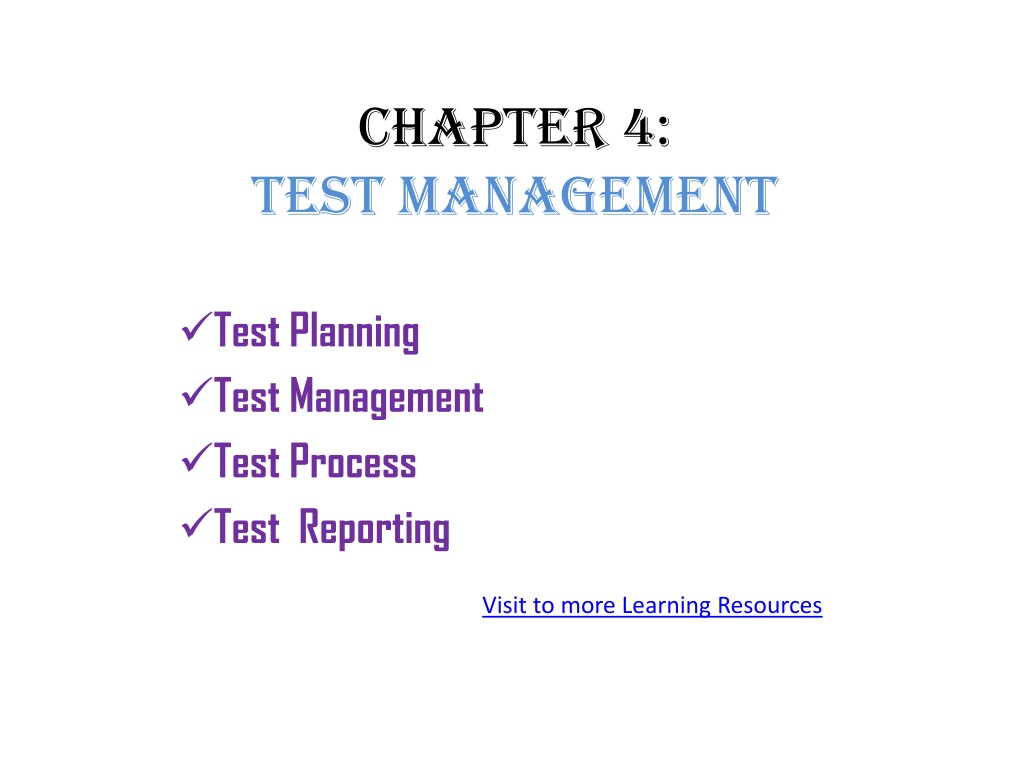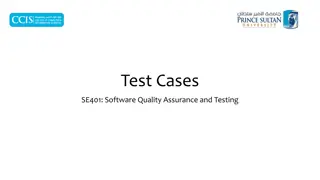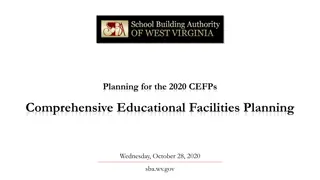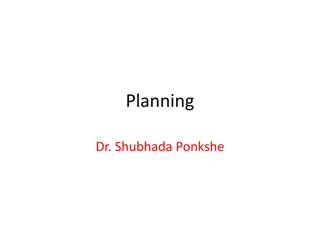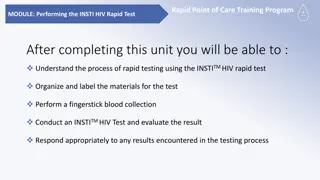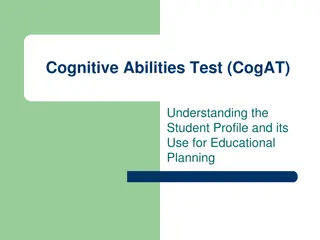Comprehensive Guide to Test Planning in Test Management Process
Understand the importance of Test Planning in Test Management Process, covering topics such as preparing a Test Plan, defining scope, selecting testing approach, setting criteria, allocating responsibilities, resourcing needs and training, identifying deliverables, and structuring testing tasks effectively. Explore the essential steps involved in each phase to ensure successful testing outcomes.
Download Presentation

Please find below an Image/Link to download the presentation.
The content on the website is provided AS IS for your information and personal use only. It may not be sold, licensed, or shared on other websites without obtaining consent from the author. Download presentation by click this link. If you encounter any issues during the download, it is possible that the publisher has removed the file from their server.
E N D
Presentation Transcript
Chapter 4: Test Management Test Planning Test Management Test Process Test Reporting Visit to more Learning Resources
Test Planning Test Plan: It is a document that describes the scope , approach ,resource and schedule required for conducting test activities. Following are the activities done as part of test planning 1. Preparing a Test Plan 2. 2. Scope 3. Deciding a Test approach 4. Setting up criteria 5. Identifying Responsibilities 6. Staffing and Training needs 7. 7. Resources 8. Test Deliverables 9. Testing task Plan Scope Management approach criteria for testing Responsibilities needs Resources requirement Deliverables task
2.Scope 2.Scope Management
3.Deciding a Test approach approach
4.Setting up criteria criteria for testing
5.Identifying Responsibilities Responsibilities Specify no of testing staff and role Identify people who will responsible for acceptance testing Identify test team for test environment such as developers ,tester ,Operational staff ,testing services etc..
6.Staffing and Training needs needs These needs communicate resource requirement and get approval of resources.
7.Resources 7.Resources requirement
8.Test Deliverables: Deliverables: Test deliverable is any document /Script/Data related to testing which is handover to Client/Stakeholder during or at the end of testing phase. Following are different types of deliverables that are generated at every phase of SDLC:
9.Testing task task Uses work break down structure i.e. first various task are identified and then identify dependency among them. Identify skills for testing Determine size estimation for testing: LOC (Line of Code) or FP (Function Points) Determine effort estimation for people: Days/months/years
Test Management It refers to the activity of managing the S/W testing process Test management allows different teams to plan , develop , execute and access all testing activities. 1. Standards: 1.Internal Standards: 2. External standards: Customer,National,International 2. Test Infrastructure Management 3. Test People/Team Management
1.Standards It controls the activities under testing
2.Test Infrastructure Management More stability , Continuity and reliability is provided to automation testing by providing stronger infrastructure . It is used for supporting automated and manual s/w testing Testing infrastructure includes: 1. Test plan document 2. Test Cases (Planned and Designed) 3. Test environment (back end and front end) 4. Defect tracking database 5. Version control System 6. Requirement tracing tools 7. Test Labs
3.Test People Management Test team is formed with people with various skill and experience level. So to maximize quality their is need to mange a peoples which can be done by test lead. Responsibilities of test lead: 1. Identify how the test team will formed. 2. Identify scope of testing. 3. Put out the test plan 4. Check what skills required for available resources. 5. Identify tools for test reporting , test management , test automation etc 6. Provide training for team 7. Create healthy environment for all resources to gain maximum throughput.
Test team management activities: 1. 2. 3. 4. 5. 6. 7. 8. 9. Initiate test planning activities Encourage the team to conduct review meetings Monitor test progress Check available resources and reallocate them as required Check for any delays in schedule Discuss and resolve issues of testers Prepare plan to resolve risk Initiate timely status to the stakeholders and management. Bridges gap between the testing team and the management.
3.Test Process Testing is not a single activity instead it s a set of number of processes. It includes following activities: 1. Base Lining a Test Plan 2. Test Case Specification 3. Update of Traceability Matrix
1.Base Lining a Test Plan It is one of the type of non-functional testing. It refers to the validation of documents and specifications on which test cases would be designed. The requirement specification validation is baseline testing. Generally a baseline is defined as a line that forms the base for any construction or for measurement, comparisons or calculations. It is developed by competent people and and given to higher authorities for approval . If accepted then followed for further all activities If changes are needed then first it is made into test plan and again approval is needed. A majority of the issues are solved through baseline testing.
2.Test Case Specification Test case specification has to be done separately for each unit. Based on the approach specified in the test plan first determine the feature to be tested for each unit. Based on these the test cases are specified for testing unit. Success of product is depending quality of test cases through which it was passed.
3.Update of Traceability Matrix It act as tool that validate whether every requirement is tested or not Every test case should associated with requirement and every requirement has one or more associated test cases. RTM(Requirement Traceability matrix) is created in requirement gathering phase by putting unique id to each one. When a test case is finished corresponding requirement which is being tested is updated with test specification identifier. By doing this two way connection between test case and requirement is established.
Testability matrix helps in: Ensuring 100% test coverage Showing requirement/document inconsistencies Displaying the overall defect/execution status with focus on business requirements. Template for RTM(Requirement Traceability matrix) :
4.Executing Test Cases Proper execution of test cases is essential which will minimize the work and reduce the time to release s/w product. Test execution task: Follow the test procedures to execute test cases. Do the confirmation testing for the failed test cases. Log the result for test execution. Compare actual and expected results. In case of difference defect occurrence is reported. Update defect database which is used to communicate between developer and tester team. So the execution of test cases will decide the suspension or resumption of further test cases. 1. 2. 3. 4. 5. 6.
Software Test Metrics Software Test Metrics is used in decision making. The test metrics is derived from raw test data. Because what cannot be measured cannot be managed. Hence Test Metrics is used in test management. It helps in showing the progress of testing.
Benefits of Metrics Provide status visibility. Form a basis for decision making. Set realistic expectations. Focus people s activities. Supports process improvement.
Some of the Software Test Metrics are as below Requirements Volatility Review Efficiency Productivity in Test Execution Defect Rejection Ratio Defect Fix Rejection Ratio Delivered Defect Density Outstanding defect ratio
Requirements Volatility: Formula = {(No. of requirements added + No. of requirements deleted + No. of requirements modified) / No. of initial approved requirements} * 100 Unit Of measure = Percentage
Collecting and Analyzing text Collecting and Analyzing text Metrics Metrics
Review Efficiency Components - No. of Critical, Major & Minor review defects - Effort spent on review in hours - Weightage Factors for defects: Critical = 1; Major = 0.4; Minor = 0.1 Formula = (No. of weighted review defects/ Effort spent on reviews) Unit Of measure = Defects per person hour
Productivity in Test Execution Formula = (No. of test cases executed / Time spent in test execution) Unit Of measure = Test Cases per person per day
Defect Rejection Ratio Formula = (No. of defects rejected / Total no. of defects raised) * 100 Unit of Measure = Percentage
Defect Fix Rejection Ratio Formula = (No. of defect fixes rejected / No. of defects fixed) * 100 Unit of Measure = Percentage
Test summary report Test summary report Test summary report is a document which contains summary of test activities and final test results. After the testing cycle it is very important that you communicate the test results and findings to the project stakeholders so that decisions can be made for the software release. i.e. If further testing is required and we need to delay the release. Test summary report will be different for different kind of testing. In addition to test coverage and unresolved defects test summary reports should also contain test strategy, test objectives and overall result of test effort. 1. 2. 3. 4.
Advantages: All relevant stakeholders of the Project will be able to see the health of AUT (application under test). It will help them to take necessary steps proactively, if required. It will to justify the testing effort that testing team is putting in the project. It will help in building more mature process
Guidelines: Guidelines: It should be published after every test run cycle Guidelines: Mention all testing activities All reports should be maintained in a document repository system Guidelines:
Test summary report Test summary report Template Template
Outstanding defect ratio Formula = (Total number of open defects/Total number of defects found) * 100 Unit Of measure = Percentage For more Details Contact Us
